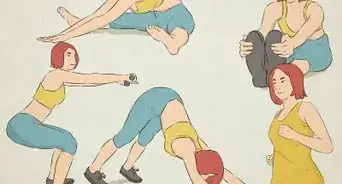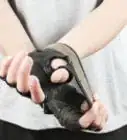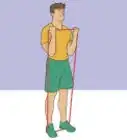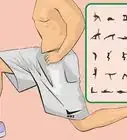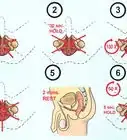This article was co-authored by Alphonso White. Alphonso White is a Certified Personal Trainer and Fitness Coach at CompleteBody in New York City. With over 20 years of experience in the personal fitness industry, Alphonso specializes in fat loss, toning, and functional training. As an ACE Certified Personal Trainer (ACE-CPT), he creates structured, personal workout plans geared towards short and long-term fitness goals. Alphonso also holds a BS in Nutrition and Exercise Science from Queens College and is a Black Belt in Seido Karate.
There are 10 references cited in this article, which can be found at the bottom of the page.
This article has been viewed 208,440 times.
Exercise goals can help you build muscle and lose fat, creating more definition at the surface of your skin. To create a "buff" look, you will need to lift weights regularly and add cardiovascular exercise. Getting buff requires a commitment to working out 5 or more days per week, so read these guidelines to get started today.
Steps
Choose Goals
-
1Decide the areas of your body that are the weakest. Getting buff requires you to build weak muscles to even out your physique.
- Sign up for a fitness test with a personal trainer at the gym, if you are unsure where you are weak. They can test your aerobic and strength and give you some areas to work on.
-
2Set strength and aerobic goals. These will keep your workouts on track and allow you to hit milestones as you change your body's shape.[1]
- For example, your cardio goal may be to run 2 miles (3.2 km) in 15 minutes. Interval training, using sprints and moderate exertion can help you reach your goal, by running 3 or 4 times per week.
- For example, your strength goals may be to do 10 push ups in 2 months.
- These goals will differ greatly between men and women for the most part. Men may want to build more muscle mass, while women may want to build lean muscle mass. The difference is in the execution of your Weightlifting.
- Include weight loss goals, if they apply to you. You can still get buff and gain muscle mass while losing weight. While Weightlifting speeds up your metabolism, you will need to spend an equal amount of time doing aerobic exercise to burn more fat off your body.[2]
Advertisement -
3Write down your goals. Divide the goals up into 4 or 5 smaller touchstones, so that you can monitor your progress.
-
4Create a gym schedule. Try to fit in Weightlifting 3 or 4 times per week with a day of rest in between, cardio at least 3 times per week for 30 minutes and body weight exercises 3 to 4 times per week. Add in stretching to cool down each day.[3]
- Don't forget to take rest days. If you feel you are doing too much or you are exceptionally tired, take a day for your body to recover. Alternate Weightlifting and cardio days, during the majority of the week. Pay attention to your body so that it can rebuild stronger muscles while you rest.
Body Weight Exercises
-
1Learn how to do the basic body weight exercises that work more than 1 muscle group at once. These include squats, push-ups, and planks.
- Take a barre, core burn, boot camp or TRX band class to learn how to do these exercises with proper form. You should be able to do them on your own, at home or at the gym, after a few classes.
- Stop lifting weights if you are feeling the work in your lower back. Seek the help of a personal trainer so that you can get alternate exercises.
-
2Do body weight exercises 3 to 4 times per week. You can mix in this training with either cardio or Weightlifting days.
-
3Do circuits of body weight exercise, giving yourself 30 seconds to rest between sets. Shorter rest times will improve the aerobic burn during this type of strength training.
-
4Do 2 to 3 sets of 10 to 15 reps. Do these repetitions slowly, pausing at the bottom or top of dynamic movements, so that you can activate different muscles.[4]
-
5Increase the difficulty of the exercise, by going further or holding hand weights while you do the exercise. You should aim to increase difficulty every 2 to 3 weeks of consistent work.[5]
Weightlifting
-
1Start with weight machines. Learn proper form in this easy to use format first, if you have never lifted weights before.[6]
- Choose an amount of weight that will allow you to do at least 2 sets of 10. People who are aiming to build leaner muscles, rather than muscle mass, may choose to use less weight and do 3 sets of 15 repetitions.
-
2Work short and long muscle fibers. After completing a set of repetitions with full range of motion, do a set of half range of motion more quickly. This will work the fast twitch muscles as well as the longer fibers.[7]
-
3Target muscle groups on different days. For example, do arms and shoulders on Monday, legs and abs on Tuesday and chest and back on Wednesday. Never work the same areas 2 days in a row.
-
4Work your target muscle groups to fatigue. You should reach muscle exhaustion in those groups when you stop lifting. You will build muscle quickly and get buff faster.[8]
-
5Increase the weight you lift every 3 weeks. Increase in increments of 5 to 10 lbs. (2.2 to 4.5kg).[9]
-
6Start lifting free weights as soon you know how to do proper form. Make sure your body does not sway. Lifting weights without the help of machines can build muscle faster, and it can also be combined with work on weight machines.
Cardio Routines
-
1Add 20 to 30 minutes of cardio exercise 3 to 4 times per week. You will look buffer if you melt off some of the fat on your body. It is difficult to do this with strength training alone.
-
2Try interval training. Do 1 to 2 minutes of sprinting, followed by 4 to 5 minutes of moderate intensity exercise. Intervals increase the efficiency of your metabolism, burning more fat.[10]
- If you choose to do interval training, you will get the same or more benefit in a 20 or 30 minute period of exercise as you would doing 45 minutes to 1 hour of work at the same moderate intensity.
-
3Try several cardio machines or sports. Do running, swimming, cycling, speed walking, elliptical and rowing, so that you work different muscles and avoid overtraining.
-
4Have a cool down period and stretch after your aerobic exercise.
Eat Right
-
1Create a meal plan that adds more protein into your diet. Protein is the building block of muscle, and you should increase your consumption immediately after you work out and in general.[11]
- Lean proteins that help build healthy muscle include non-fat Greek yogurt, fish, chicken, turkey, lean pork, lean beef, beans, eggs and milk.
-
2Restrict your consumption of refined carbohydrates. As you build muscle and your metabolism increases, these will not fill you up for very long.
- Choose complex carbohydrates like oats, quinoa, whole wheat bread, brown or wild rice and lentils.
-
3Eat more produce. You need the vitamins and minerals from fruits and vegetables to remain healthy. Seek a trainer's help if you feel you need nutritional supplements, but try to provide what you need with your regular diet first.
-
4Add a protein-filled snack, like a yogurt smoothie, nuts or chicken wrap after you work out. This will serve to curb hunger while your metabolism is running high.
Expert Q&A
-
QuestionWhat exercise burns back fat fast?
 Alphonso WhiteAlphonso White is a Certified Personal Trainer and Fitness Coach at CompleteBody in New York City. With over 20 years of experience in the personal fitness industry, Alphonso specializes in fat loss, toning, and functional training. As an ACE Certified Personal Trainer (ACE-CPT), he creates structured, personal workout plans geared towards short and long-term fitness goals. Alphonso also holds a BS in Nutrition and Exercise Science from Queens College and is a Black Belt in Seido Karate.
Alphonso WhiteAlphonso White is a Certified Personal Trainer and Fitness Coach at CompleteBody in New York City. With over 20 years of experience in the personal fitness industry, Alphonso specializes in fat loss, toning, and functional training. As an ACE Certified Personal Trainer (ACE-CPT), he creates structured, personal workout plans geared towards short and long-term fitness goals. Alphonso also holds a BS in Nutrition and Exercise Science from Queens College and is a Black Belt in Seido Karate.
Certified Personal Trainer, CompleteBody NYC No single exercise will help with fat loss—it's a team effort that begins with reducing your caloric intake. In terms of back muscles, pull-ups, rows, and pulldown exercises are excellent exercises to try.
No single exercise will help with fat loss—it's a team effort that begins with reducing your caloric intake. In terms of back muscles, pull-ups, rows, and pulldown exercises are excellent exercises to try. -
QuestionShould I take steroids?
 TamFCommunity AnswerBy no means should you take steroids. They can cause organ failures, sexual dysfunction (impotence), and even cancer. The best way to get buff is to follow a healthy yet high-calorie diet, consume mass-building supplements to put on weight and mass, and exercise every other day.
TamFCommunity AnswerBy no means should you take steroids. They can cause organ failures, sexual dysfunction (impotence), and even cancer. The best way to get buff is to follow a healthy yet high-calorie diet, consume mass-building supplements to put on weight and mass, and exercise every other day. -
QuestionI've been working out for a very long time, but I'm not getting buff. Should I start taking supplements?
 Community AnswerNo. You are probably not maximizing whatever workout you are doing. Be sure to push yourself, do fewer repetitions with heavier weights to add mass, and give your muscles 48 hours to recover. It's not the quantity of workouts so much as the quality of each one that will help you transform.
Community AnswerNo. You are probably not maximizing whatever workout you are doing. Be sure to push yourself, do fewer repetitions with heavier weights to add mass, and give your muscles 48 hours to recover. It's not the quantity of workouts so much as the quality of each one that will help you transform.
Things You'll Need
- Personal trainer
- Target areas
- Goals
- Workout schedule
- Gym membership
- Weight machines
- Free weights
- Barre/core burn/boot camp classes
- Body weight exercises
- Interval training
- Lean protein
- Complex carbohydrates
- Post-workout snacks
References
- ↑ https://www.self.com/story/how-to-set-realistic-fitness-goals
- ↑ https://edition.cnn.com/2017/03/06/health/cardio-lifting-weight-loss-partner/index.html
- ↑ https://www.self.com/story/heres-what-a-perfect-week-of-working-out-looks-like
- ↑ https://www.mensjournal.com/health-fitness/rep-range-builds-most-muscle/
- ↑ https://www.self.com/story/weight-lifting-increase
- ↑ https://lifehacker.com/gym-showdown-free-weights-vs-machines-1789967530
- ↑ https://medium.com/@SandCResearch/what-is-regional-hypertrophy-and-how-does-it-happen-c1dafe3ce0a9
- ↑ https://www.askmen.com/sports/bodybuilding/should-you-lift-weights-to-failure.html
- ↑ https://www.self.com/story/weight-lifting-increase
About This Article
To get buff, do basic body weight exercises that work multiple muscle groups at the same time, like squats and planks. Alternatively, lift weights to build muscle mass, working your muscles to fatigue but alternating days you work your arms and legs so you don't overwork any part of your body. You can also run, bike, or do another kind of cardio 3-4 times a week for 20-30 minutes, since cardio burns fat. Finally, be sure to fuel your workouts with a high-protein diet, since protein builds muscle. To learn how to get buff by using interval training to boost your metabolism, read on!

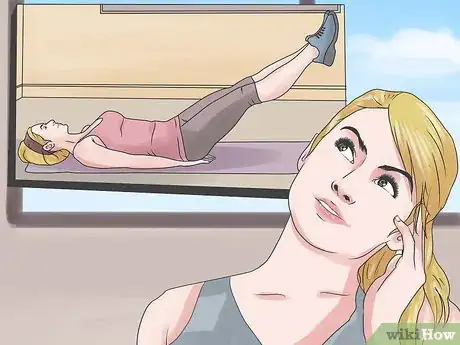

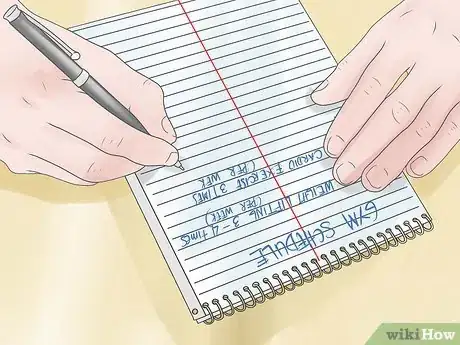
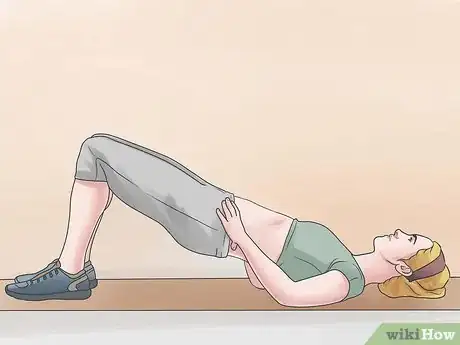
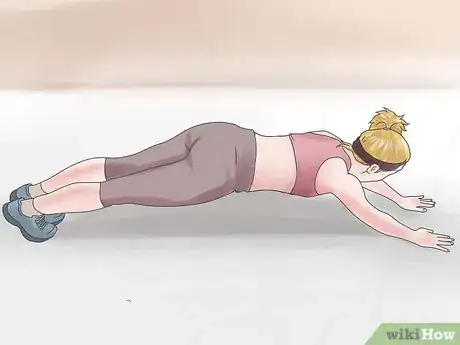
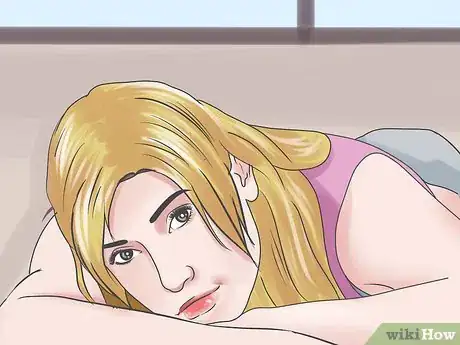
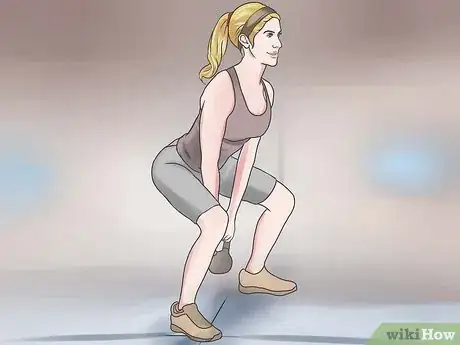
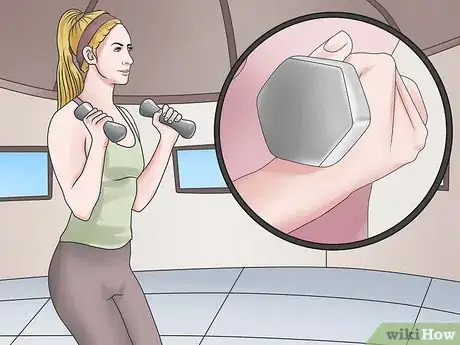
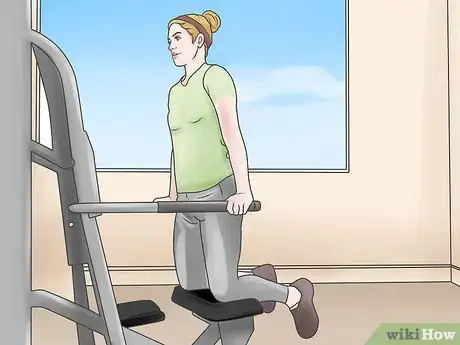
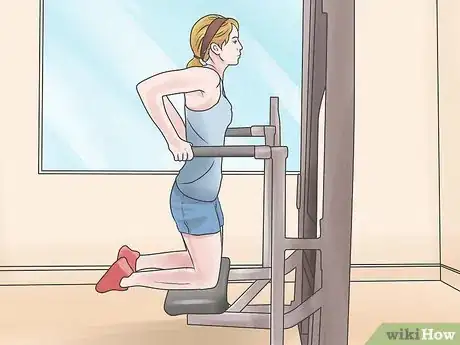
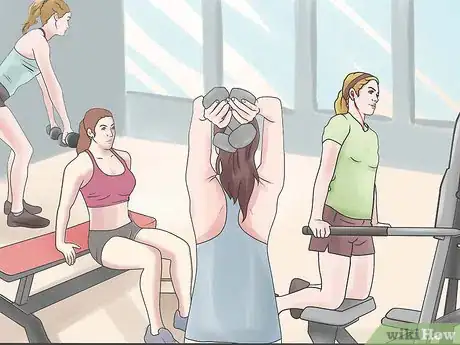
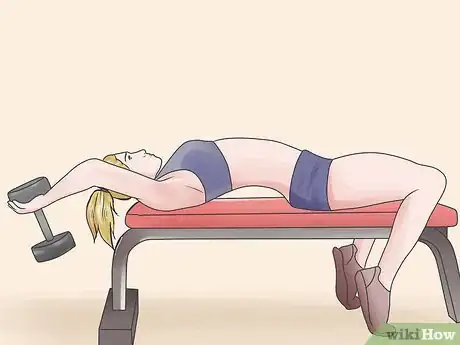
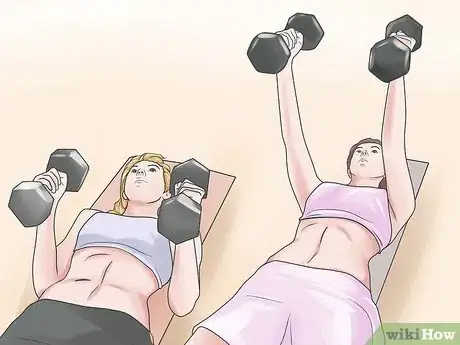
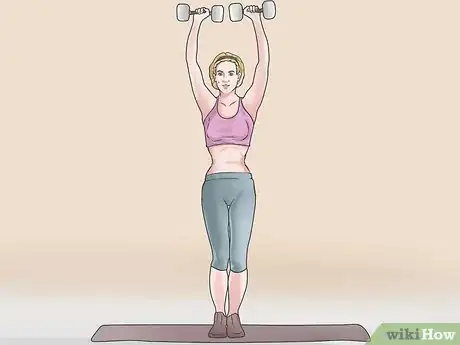
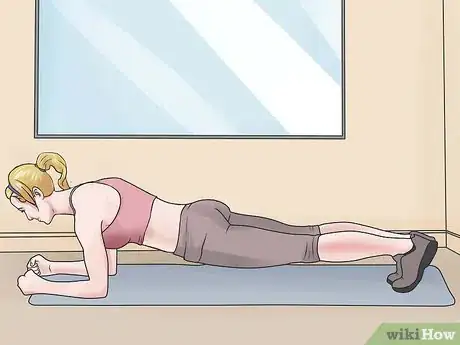
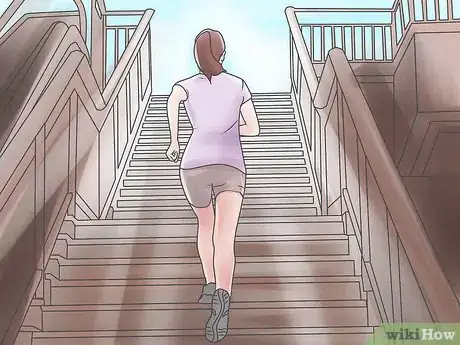
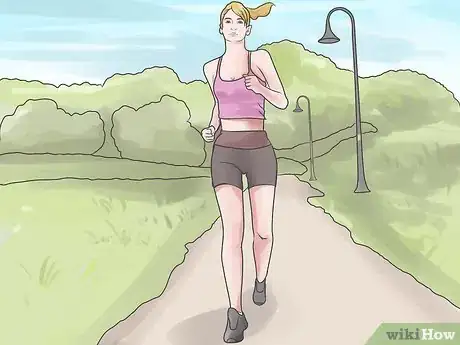
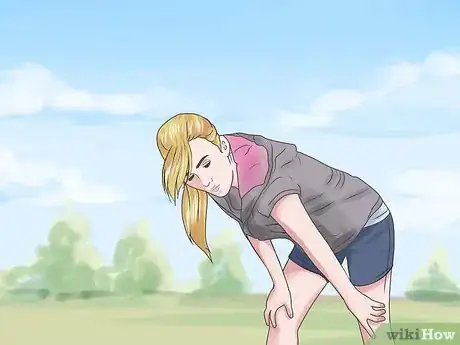

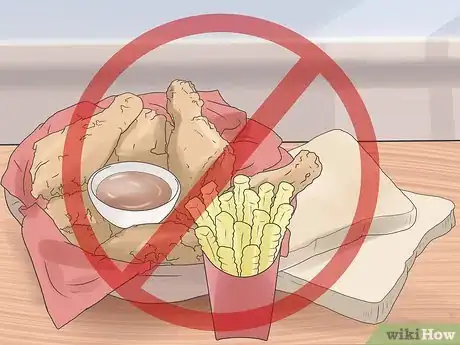

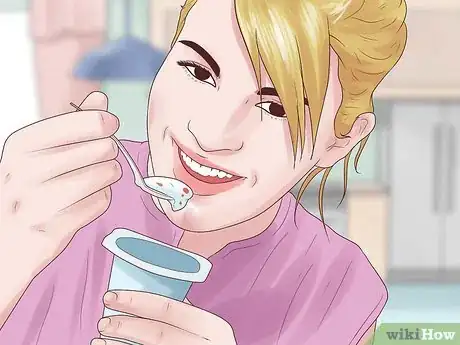
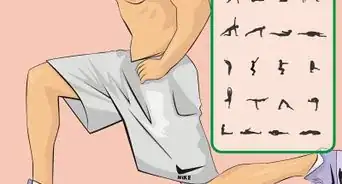
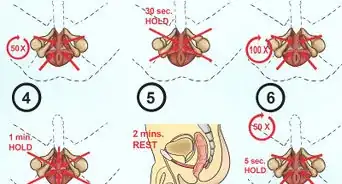

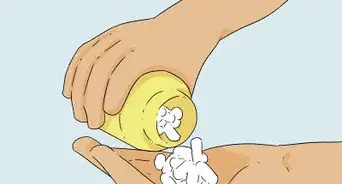
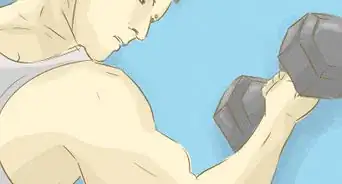
-Step-24.webp)

